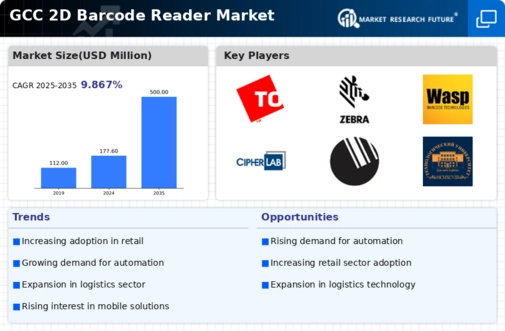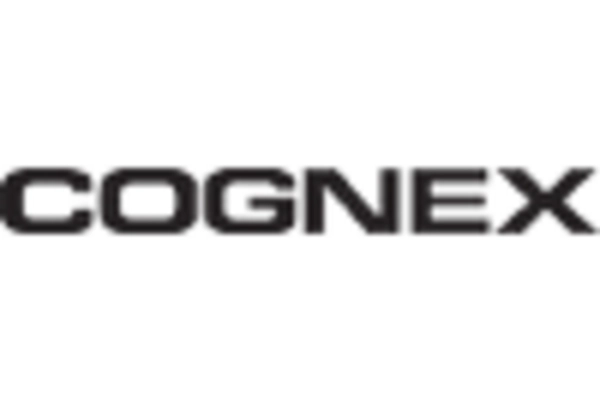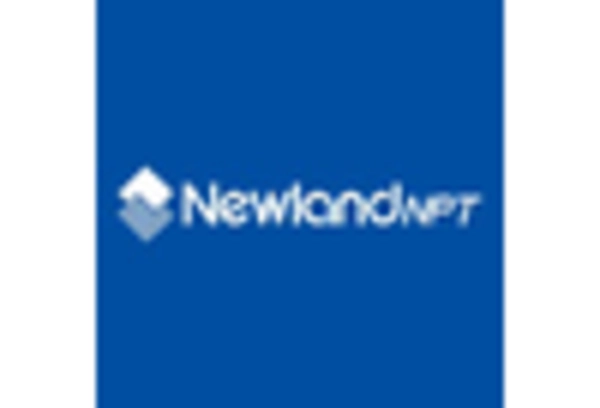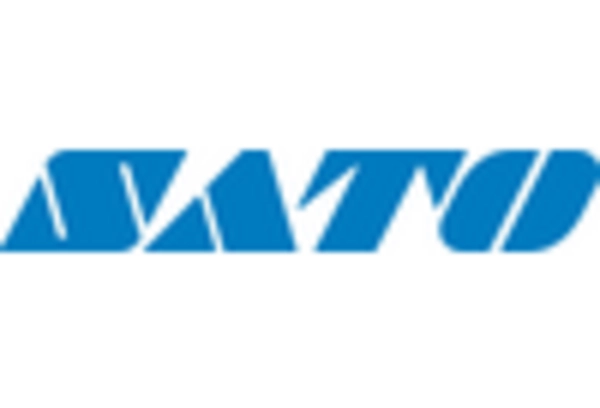Surge in E-commerce Activities
The rise of e-commerce in the GCC region is a pivotal factor influencing the 2d barcode-reader market. With online shopping becoming increasingly popular, logistics and warehousing operations are under pressure to enhance efficiency. 2d barcode readers are essential for tracking shipments, managing inventory, and ensuring accurate order fulfillment. In 2025, e-commerce sales in the GCC are expected to reach $30 billion, reflecting a growth rate of 15% annually. This surge necessitates the adoption of advanced scanning technologies to manage the complexities of e-commerce logistics. As businesses strive to meet consumer demands for speed and accuracy, the 2d barcode-reader market is likely to benefit significantly from this trend.
Increasing Retail Sector Growth
The retail sector in the GCC is experiencing robust growth, which is likely to drive the 2d barcode-reader market. As retail businesses expand, the need for efficient inventory management and checkout processes becomes paramount. The integration of 2d barcode readers facilitates faster transactions and enhances customer experience. In 2025, the retail sector is projected to grow by approximately 10%, leading to a heightened demand for advanced scanning solutions. This growth is indicative of a broader trend towards digitization in retail, where 2d barcode readers play a crucial role in streamlining operations. Consequently, the increasing retail sector growth is a significant driver for the 2d barcode-reader market, as businesses seek to adopt technologies that improve efficiency and accuracy.
Expansion of Smart City Initiatives
The GCC region is witnessing a surge in smart city initiatives, which are likely to impact the 2d barcode-reader market positively. As cities become more interconnected, the need for efficient data collection and management increases. 2d barcode readers are integral to various applications, including public transportation, inventory management, and urban logistics. In 2025, investments in smart city projects in the GCC are expected to exceed $100 billion, creating opportunities for advanced scanning technologies. This expansion of smart city initiatives is a key driver for the 2d barcode-reader market, as municipalities and businesses seek to leverage technology for improved urban management.
Growing Demand for Contactless Solutions
The demand for contactless solutions is on the rise in the GCC, particularly in retail and healthcare sectors. The 2d barcode-reader market is likely to see increased adoption as businesses seek to minimize physical contact and enhance safety measures. Contactless payment systems and self-checkout solutions are becoming more prevalent, necessitating the use of 2d barcode readers for efficient transactions. In 2025, the market for contactless payment solutions is projected to grow by 20%, indicating a shift in consumer preferences. This growing demand for contactless solutions is a significant driver for the 2d barcode-reader market, as businesses adapt to changing consumer behaviors and safety concerns.
Technological Integration in Supply Chain
The integration of advanced technologies within supply chains is transforming operations across various sectors in the GCC. The 2d barcode-reader market is poised to benefit from this trend as companies increasingly adopt automation and data analytics. By utilizing 2d barcode readers, businesses can enhance traceability, reduce errors, and improve overall efficiency. In 2025, it is estimated that 70% of supply chain operations in the region will incorporate some form of automation, driving demand for reliable scanning solutions. This technological integration not only streamlines processes but also provides valuable data insights, making it a crucial driver for the 2d barcode-reader market.

















Leave a Comment